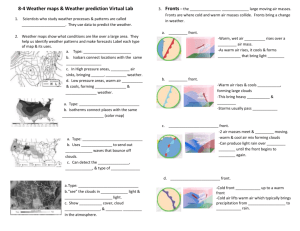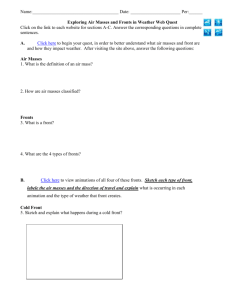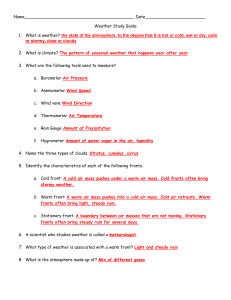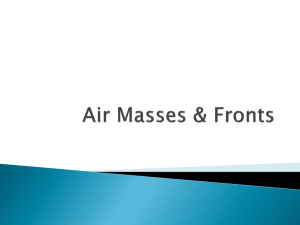Weather - My CCSD
advertisement
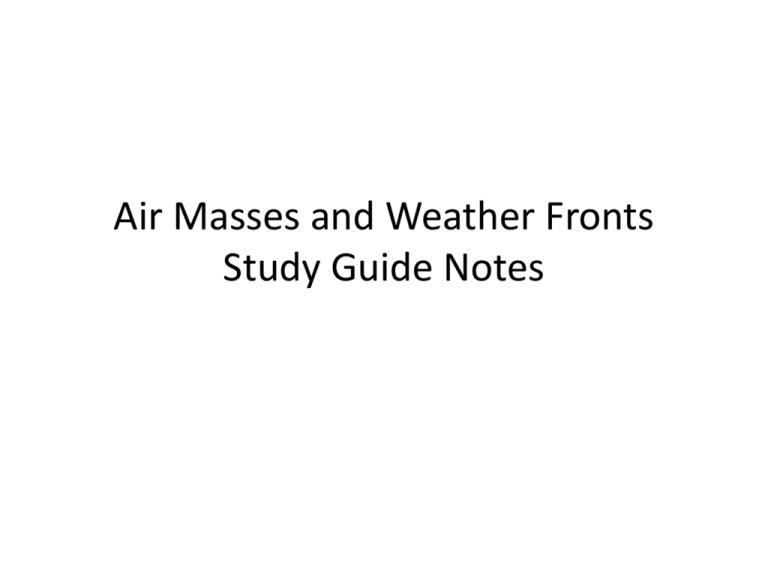
Air Masses and Weather Fronts Study Guide Notes The study of weather is meteorology • Someone who studies weather is called a meteorologist Air Pressure and Weather • High Pressure = air is sinking sunny because the air pushes down allowing no evaporation = no clouds • Low Pressure = air is rising rainy and stormy because air rises up allowing for lots of evaporation = lots of clouds and rain • An AIR MASS is a body of air with a certain temperature and moisture level. Caused by where it formed. C = Continental: the air came from over the land = air is DRY M = Maritime: the air came from over the ocean = air is WET P = Polar: the air came from near the poles = air is COLD T = Tropical: the air came from near the equator = air is HOT Movement of Air Mass • 1. Air masses are moved around by global winds. The global winds above the U.S. always blow Northeast. • 2. Air masses are also pushed around by the Jet Stream – Jet Stream= (fast moving stream of air over US) changes it’s pattern of movement each day. The movement of weather and air masses depends on Both of these factors. Fronts • When two air masses meet, the air within them doesn’t mix. The air masses fight! • often resulting in rain and storms. • At all fronts, warmer air gets pushed up Causing low pressure and clouds/rain. –4 Types of Fronts: 1.Warm 2.Cold 3.Occluded 4.Stationary • • • • Warm Fronts The area was cold, then warm air moved in to that area. Warm air is forced upwards as it hits colder air. Rises up to make clouds and light rain. After front passes it warms up. Cold Fronts • The area was warm, then cold air moves in to that area. • The cold air coming in, forces the warm air to rise up fast (then it cools into clouds) • Causes lots of violent storms (thunderstorms and heavy rain) • After front passes temperature is cooler Occluded Fronts • When a cold front (moving quickly) catches up to a warm front (moving slowly) • Warm air is trapped between two bodies of cold air. • Long periods of light rain. • Colder after front passes. Stationary Fronts • Warm and cold front run into each other. • These fronts are stationary (don’t move) because they sit still for many days with light rain. 3-Day Forecast for Chicago Today Because: Tomorrow Next Day Quiz 1 Describe the weather in Chicago right now and how it will change over the next 2 days. Why? Chicago 3-Day Forecast for Reno Today Because: Tomorrow Next Day Quiz 2: Describe the weather in Reno right now and how it will change over the next 2 days. Explain why. Reno


